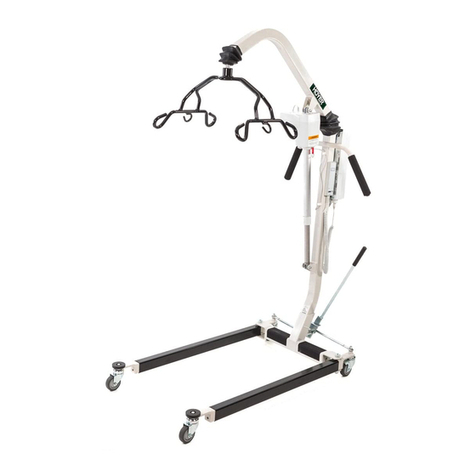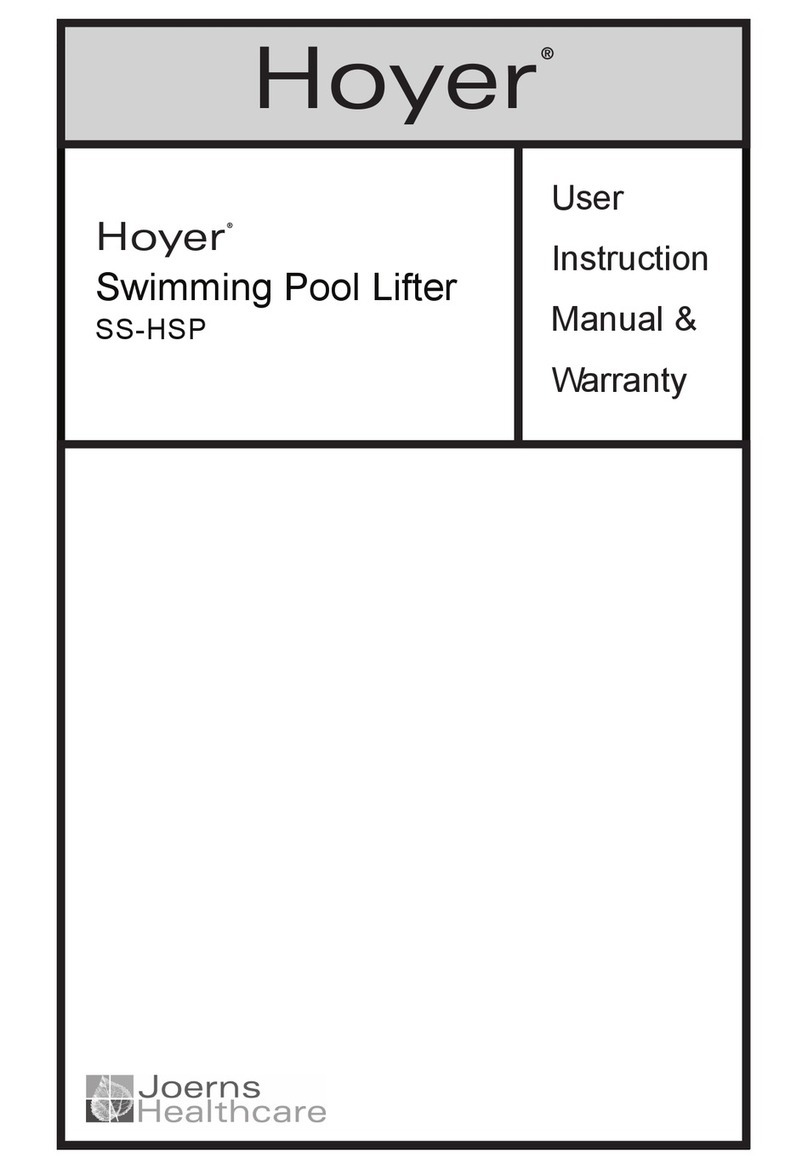7. Fitting A Ranger Chair To A Dipper Li
The Ranger chair is made in two assemblies, the wheeled chassis and the seat with armrests.
The two halves of the complete chair are connected with a simple latch located at the rear of the
seat. The chair is attached to the Dipper lift as follows:
1. The chair support arm of the lift has a hook and latch device similar to the one connecting
the Ranger seat to the chassis. The support arm hook must be engaged with the cross bar
at the top of the Ranger seat. The latch will engage automatically and prevent accidental
disengagement.
2. The seat can now be lifted off the chassis by operating the seat latch, which holds the
seat to the chassis, and raising the boom of the lift with the hydraulic unit. The seat will be
elevated with the boom and the chassis will remain behind.
3. To reconnect the seat to the transporter, lower the seat onto the chassis with the lower
safety latch in approximately the right position. The seat will lock automatically as the seat is
lowered. When the seat latch is engaged, disengage the latch on the chair support arm and
continue to lower the boom. The support arm will drop away from the seat and can be swung
away to one side. Check full engagement of the seat latch.
WARNING
Thelapstrapshouldbettedtosecurethepatient.
The patient can now be transported to another location.
10. Open the release valve fully anticlockwise and check the boom descends.
NOTE: The release valve is fully open and encounters a positive end stop in less than
two full turns of the knob. DO NOT force the valve past the end stop as this will result
in damage to the valve and could cause loss of hydraulic fluid.
11. Closethereleasevalveandraisetheboomuntilitisapproximatelyparalleltotheoor.
12. Fully unwind the small “T” shaped clamp screw at the extreme end of the boom. Like the
mastclamp,thetravelonthisscrewislimitedbyaxedstop.Keepturninguntilthestop is
encountered. DO NOT force the screw past the stop.
13. Iftheliftistobettedwithaseatoptionversion,thecurvedchairsupportarmcannow be
assembled to the boom. Pass the top of the support arm end through the bearing tube at
the end of the boom, making sure the safety latch at the top of the tube engages in the
grooved end of the chair support arm. The support arm will now be held and can be rotated
through 360 degrees.
NOTE: The “T” shaped clamp screw, when tightened, will prevent rotation.
14. If a spreader bar and slings are to be used instead of a seat, the Spreader bar assembly is
ttedinplaceofthechairsupporttube. Pass the spreader bar pivot tube through the bearing
tube at the end of the boom, making sure the safety latch at the top of the tube engages
in the grooved end of the spreader bar pivot tube. The spreader bar assembly will now be
held and can be rotated through 360 degrees.
NOTE: The “T” shaped clamp screw, if tightened, will have no effect on spreader bar rotation.
15. TheliftisnowreadytobettedwiththeRangerchairorslingattachment.
































